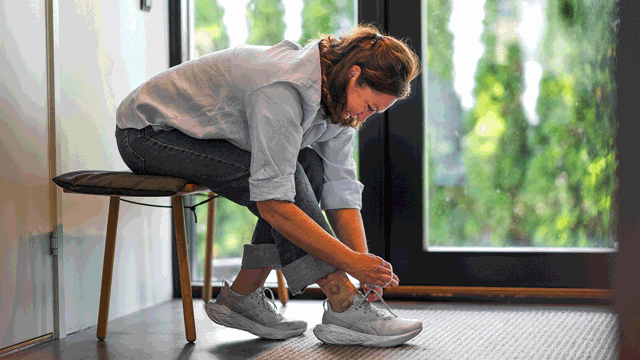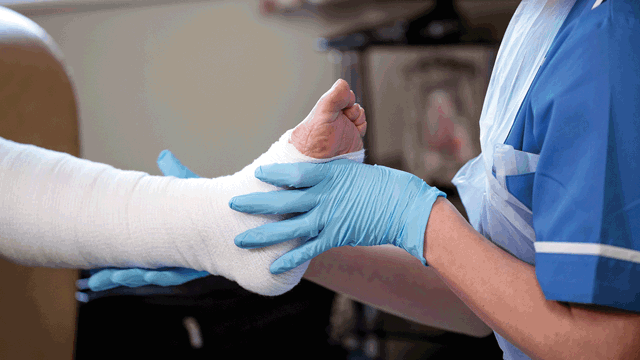Diabetic foot ulcers are a common and serious complication of both type 1 and type 2 diabetes mellitus1. Diabetes may be associated with ischaemia, neuropathy, peripheral artery disease, and foot deformities that lead to a particularly high risk of developing foot ulcers and a low likelihood of ulcer healing.
Because of the reduced blood supply to the lower limb, diabetic foot ulcers often have a risk of necrosis, infection, and involvement of the deep tissues, including bone2.
Approaches to the management of diabetic foot ulcers include debridement, protection from trauma, treatment of infection, control of exudate, and promotion of healing3. Debridement should only occur after vascular assessment and be done by a qualified practitioner.
Epidemiology
Patients with type 1 or type 2 diabetes mellitus have a lifetime risk of a foot ulcer of up to 25%2,4. Infected or ischaemic diabetic foot ulcers account for approximately 25% of all hospital admissions for patients with diabetes3,4,5. Diabetes accounts for a significant proportion of non-traumatic lower limb amputations in Australia, with estimates suggesting up to 60% of all amputations are diabetes-related6.
The age-adjusted rate of lower-limb amputation is estimated to be 15 times greater in individuals with diabetes than in the general population1,2,4.
These findings show how important it is to manage diabetic foot ulcers appropriately, quickly and effectively.
Aetiology
The causes of diabetic foot ulceration are a combination of chronic narrowing of small arterioles that supply oxygen to the tissues, diabetic arteriolosclerosis, which results in tissue ischaemia, and high venous pressure, resulting in tissue oedema and hypoxia2.
Patients with diabetes develop specific risk factors that lead to foot ulcers, including loss of sensation due to diabetic neuropathy, prior skin damage or ulcers, foot deformity or other causes of pressure, external trauma, infection, and chronic ischaemia due to peripheral artery disease1,2.
Clinical and economic burden
Global diabetes data indicates that approximately 1 in 9 adults (20-79 years) worldwide are living with diabetes, with over 4 in 10 of those unaware of their condition. The International Diabetes Federation (IDF) reports that over 537 million people had diabetes in 2021, and projections estimate this number will rise to 783 million by 2045. The majority of cases are type 2 diabetes, linked to lifestyle factors and increasingly prevalent in low- and middle-income countries1.
Rates of lower limb amputation, due to diabetic foot ulcer, are typically ten to 20 times those of non-diabetic populations7,8. Approximately 73,000 limb amputations were performed in the United States in 2010 on adults aged 20 years or older with diabetes3: 60% of all non-traumatic limb amputations occurred in people with diabetes7.
Effects on patient quality of life
Studies have shown that people with diabetes who have a healed foot ulcer have a greater health-related quality of life (HRQoL) when compared with people with chronic, non-healed diabetic foot ulcers when evaluated using standard questionnaires9. Also, for caregivers of diabetic people with chronic, non-healing foot ulcers, there is a large emotional burden9.
Risk of infection
Chronic non-healing ulcers of the foot are susceptible to infection, which can lead to serious complications, including osteomyelitis and septicaemia10,11.
When a diagnosis of ulcer infection is made, treatment is based on the clinical stage of infection, and X-ray imaging is usually performed to exclude or confirm osteomyelitis11. The most common infecting organisms include aerobic gram-positive cocci, aerobic gram-negative bacilli and anaerobic organisms in deep ulcers10,11.
According to the Infectious Disease Society of America (IDSA) guidelines, infection is present if there is obvious purulent drainage and/or the presence of two or more signs of inflammation (erythema, pain, tenderness, warmth, or induration)11. The management and treatment of infection of a diabetic foot ulcer should include a multidisciplinary team of experts including surgeons, infectious disease specialists, diabetologists, microbiologists and nursing staff11.
Prevention and risk management
Taking preventive measures and understanding the risks associated with diabetic foot ulcers are important factors in reducing the incidence of serious consequences. Early diagnosis and treatment also contributes to reducing the risk of prolonged, hard to heal DFUs.
In addition, educating and involving patients in their own foot care is an important and empowering aspect of managing risks and achieving better outcomes. Listen to Professor Paul Chadwick’s thoughts on patient empowerment in the podcast below.
Download the guide below to provide your diabetic patient with resources to help them learn more about caring for their feet.

In this episode
Listen to Professor Paul Chadwick talk about the role a patient plays in the care of diabetic foot ulcers and how to empower them.









